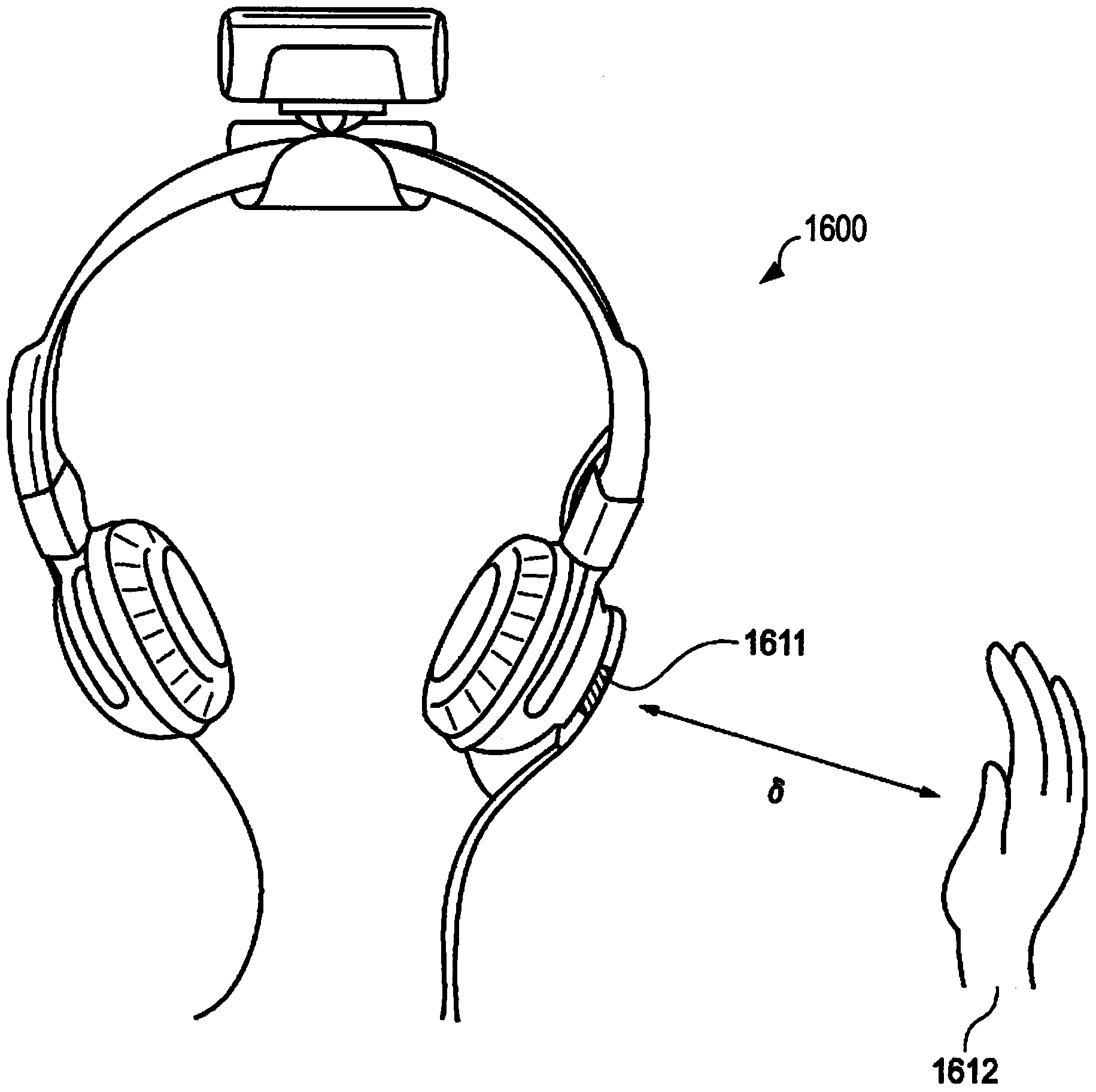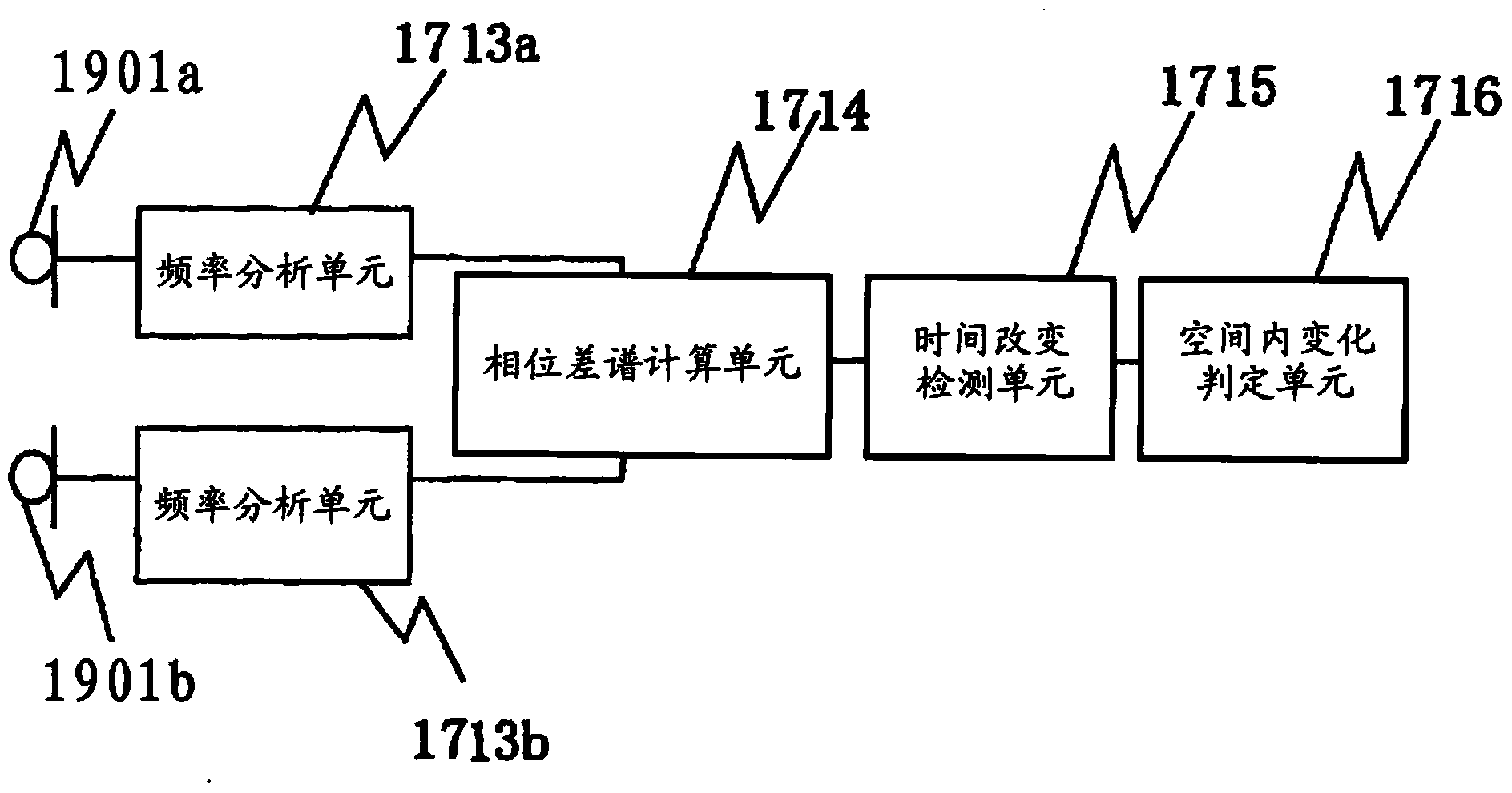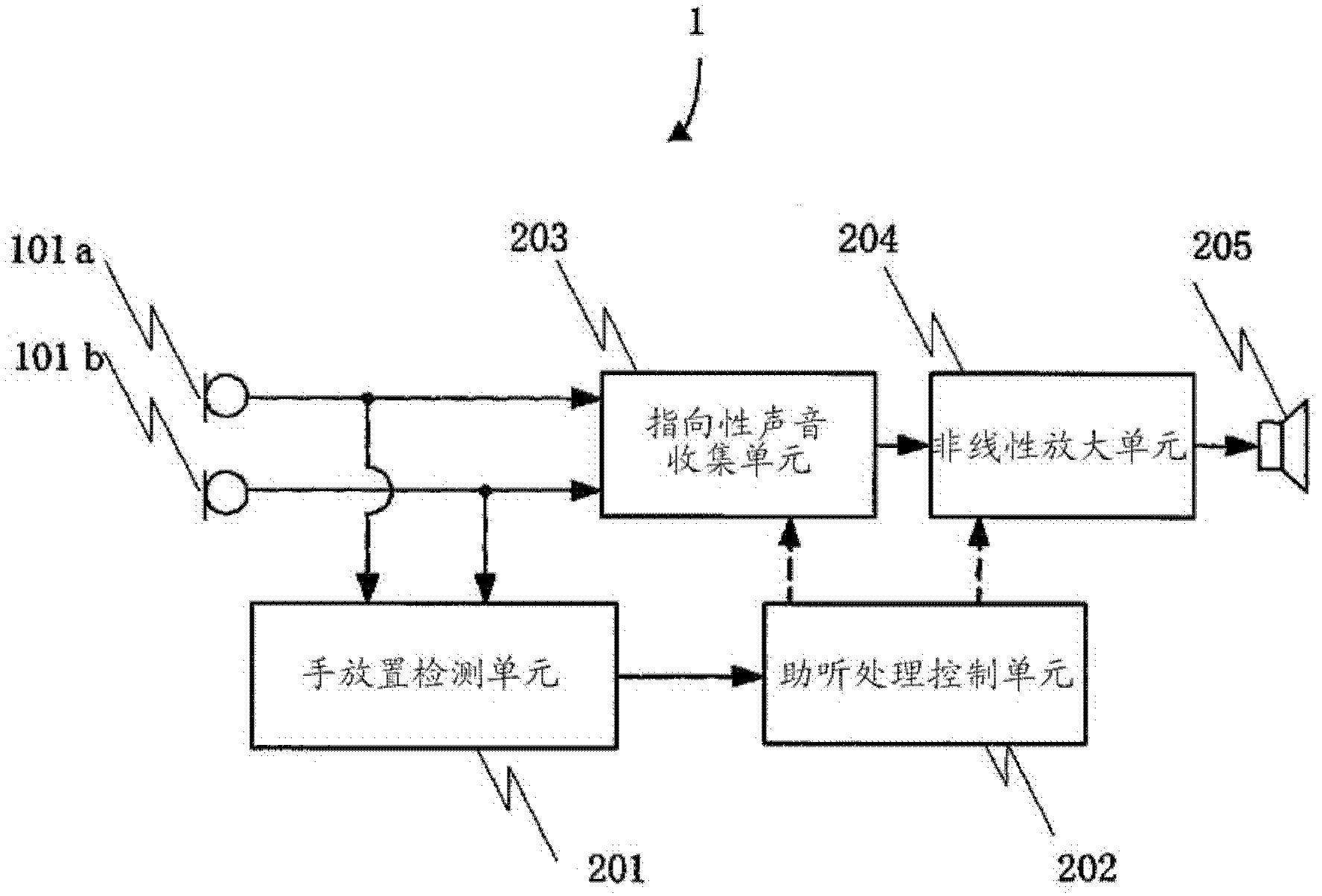Hearing aid device and hearing aid method
A hearing aid device and audio signal technology, applied in hearing aids, electrical components, etc., can solve the problems of small switches and difficult to operate switches
- Summary
- Abstract
- Description
- Claims
- Application Information
AI Technical Summary
Problems solved by technology
Method used
Image
Examples
no. 1 example )
[0060] In the first embodiment of the present invention, by referring to Figure 1 to Figure 10 To describe the hand placement detection method using the temporal change of the phase difference.
[0061] Hand placement is an action typically performed by a user when they want to hear sounds in front more clearly, ie an action to cover the left or right ear with the corresponding hand. That is, the user faces the desired sound and turns his / her palm towards the desired sound. The position of the hand is behind the auricle and, in many cases, a part of the hand is in contact with the auricle. The hand is slightly bent compared to the straight state, and, usually, fingers other than the thumb are not separated from each other but are in contact with each other.
[0062]
[0063] figure 1 It is a block diagram showing the configuration of the hand placement detection device 1 of the first embodiment. figure 1 The hand placement detection device 1 shown in includes omnidire...
no. 2 example )
[0149] will be passed by reference Figure 11 to Figure 13 A method of detecting hand placement using temporal changes in spectral power as a second embodiment of the present invention will be described.
[0150]
[0151] Figure 11 is a block diagram showing the configuration of the hand placement detection device 2 of the second embodiment. The difference between the hand placement detection device 1 of the first embodiment and the hand placement detection device 2 of the second embodiment lies in the structure of the hand placement detection unit. Except for this point, the second embodiment is the same as the first embodiment. exist Figure 11 , denote with the same reference numerals as the figure 1 The same constituent elements shown in . In this embodiment, the structure other than the hand placement detection unit is the same as in the first embodiment, and thus a detailed description thereof is omitted.
[0152] In this embodiment, as in the first embodiment,...
no. 3 example )
[0178] As described in the foregoing first and second embodiments, the presence or absence of hand placement on the ear can be determined using a temporal change in phase difference between signals input from two microphones or a temporal change in spectral power. Using the two time changes is effective from the viewpoint of accuracy in determining the presence or absence of hand placement.
[0179] A method of detecting hand placement using both temporal changes in phase difference and temporal changes in spectral power will be described as a third embodiment of the present invention.
[0180] Figure 15 is a block diagram showing the configuration of the hand placement detection device 3 of the third embodiment. The difference between the hand placement detection device 3 of the third embodiment and the hand placement detection device 1 of the first embodiment lies in the structure of the hand placement detection unit. Except for this point, the third embodiment is the sam...
PUM
 Login to View More
Login to View More Abstract
Description
Claims
Application Information
 Login to View More
Login to View More - R&D
- Intellectual Property
- Life Sciences
- Materials
- Tech Scout
- Unparalleled Data Quality
- Higher Quality Content
- 60% Fewer Hallucinations
Browse by: Latest US Patents, China's latest patents, Technical Efficacy Thesaurus, Application Domain, Technology Topic, Popular Technical Reports.
© 2025 PatSnap. All rights reserved.Legal|Privacy policy|Modern Slavery Act Transparency Statement|Sitemap|About US| Contact US: help@patsnap.com



